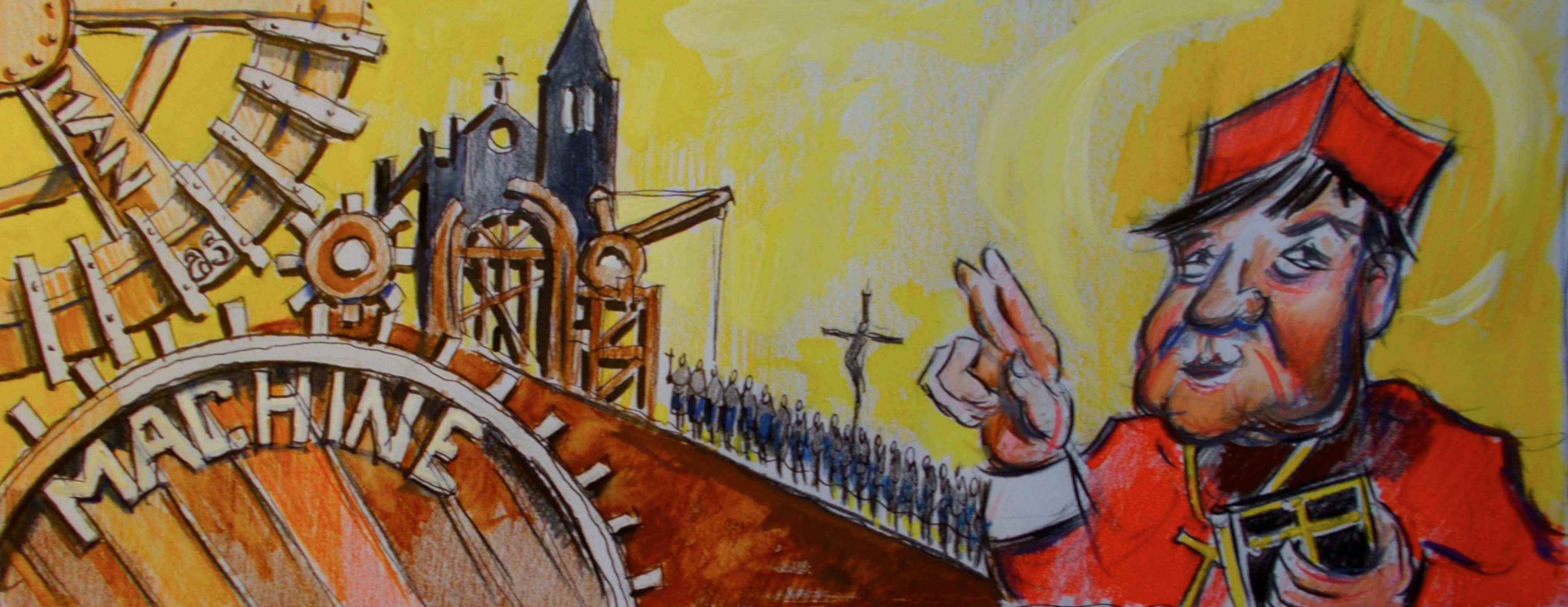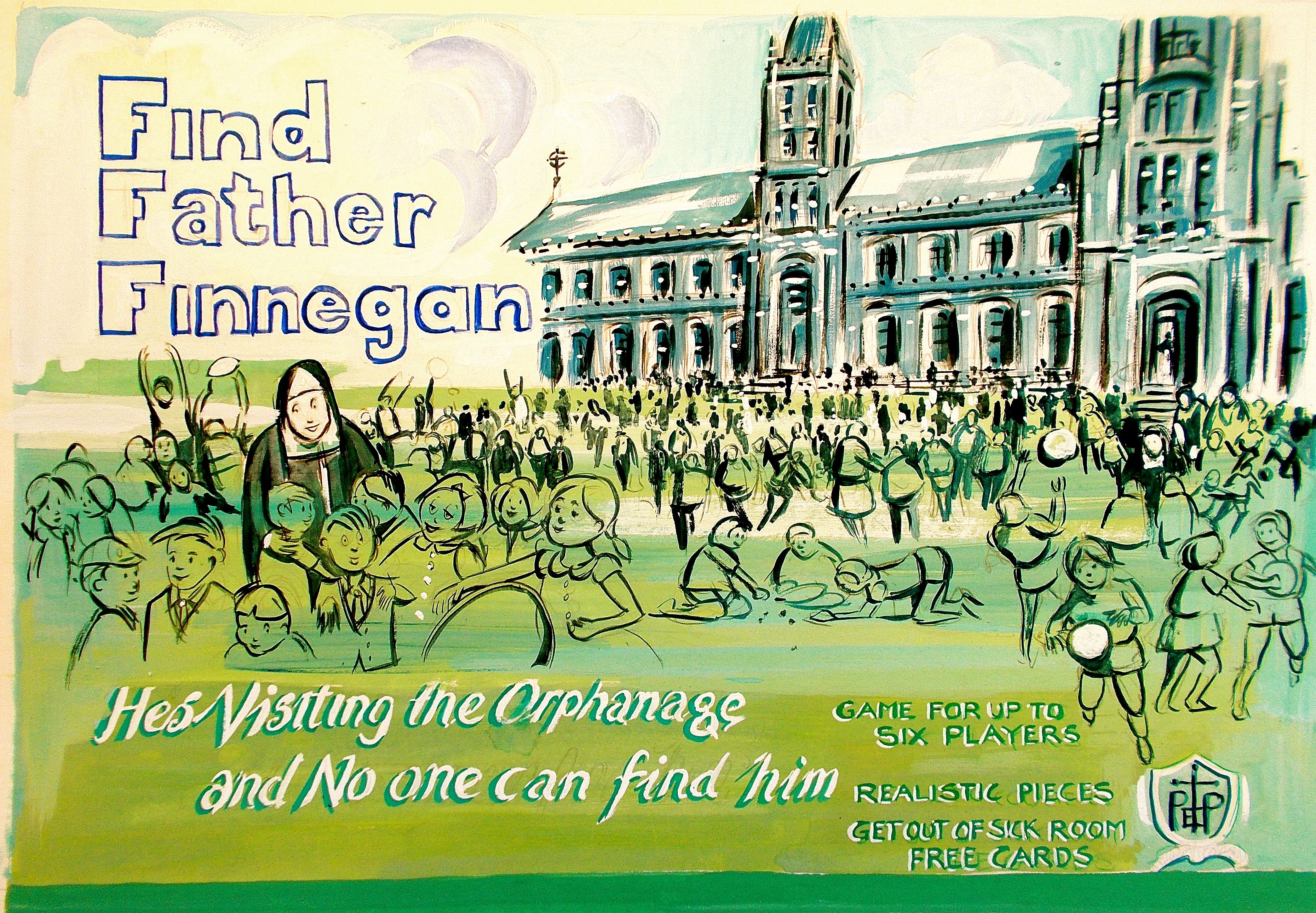
Anticipating benediction by the Cardinal we had these funky logos printed for the games release. Sadly they were ” not compliant”.
Dear reader, in response to the enormous interest in our failed board games we have decided to print details of the games so that some enterprising soul may yet stump up the funds and make this educational tool a reality. It needs to be appreciated in light of recent events. And we think gives a telling insight into how imagination is the missing tool of contemporary education. Which is why we are seriously worried about any attempt to take chaplains away from public schools. If you don’t believe it we have a character reference from John Howard as testament to the games credentials. And in anyone doubts us we have testimonials to prove it from the Catholic Boys Daily. (the Australian)
Finding Father Finnegan, ‘He’s visiting the orphanage, and no one can find him’
Father Finnegan was released as a very popular adaptation of the father O’Malley game in which Big Crosby played the part of a parish priest in ‘The Bells of St Mary’s’. The archdiocese of Melbourne and Sydney liked the idea, and thought they’d nuance the plot structure about a young priest and his unruly charges shouldering the threat of imminent school closure, with a more localised version appropriate to Australian audiences. They proposed to make a film based loosely on the Bing Crosby story, but with Chips Rafferty as the lead, and Roy Rene as the rector in Cinesound’s, “Father Finnegan visits the Orphanage’. The Ken G Hall production, facing severe post war austerity measures on film and local content was boosted when permission was grated by the Federal government to be allowed access to the entire complement of the passenger ship “SS Fiddle-sticks”, then brimming full with a boat load of post war British child migrants.
Finding Father Finnegan is a game of detective work. It consists of a board, a father counter, players counters, clues cards, clue pieces a clock and a spinning arrow. The players are entrusted to find the father who is hiding in the institution. One player is the father but pretends he’s one of the ‘finders’. Whilst the players wait for their turn, they must cover their eyes with a copy of the Old Testament (which are supplied). Each turn they play there are new clues, though not all of them lead to Father Finnegan. Reputedly the game was similar to Cluedo, but with one distinct difference. If the Father Finnegan is found in a short space of time quickly the children are safe, if prolonged searching the children disappear, and can not be found. And father, rather than being ‘found’ is just moved on.

The Father Finnegan board game could not compete with inter- communion Bingo Championships for popular appeal. Prelate holds up a “blanque-Un”.
This game was a great favourite, but production discontinued in 1978, when the transmigration scheme ceased. In all over 150 thousand were produced, and some can still be at the Catholic Education Office, and in isolated instances in the archdiocese of Ballaarat, where it is still played today.
The game board was of the simple fold type with of a plan of the orphanage, numerous sick rooms, a chapel and holes for hiding priests and children in. In addition to the previously described game pieces and Father Finnegan, each board held at least a hundred children as little brown discs, and four bibles, a piece of rope and a long piece of rubber tube and a blindfold. The game was activated by an arrow on a spigot, and each move would examine another part of the orphanage. Game counters included nuns, in which each player could block a thorough investigation and the player opposite would go back to one.
A criticism of the game is that it took hours and hours to find Father Finnegan, was impossible for the children to ever win, and the nuns, were often broken as they were made of cheap cardboard, and had a habit of flying of the board the “wind was put up them”. The children game counters, little bakelite discs, were magnetised, so they could not move, unless instructed. A first for locally produced games technology.

